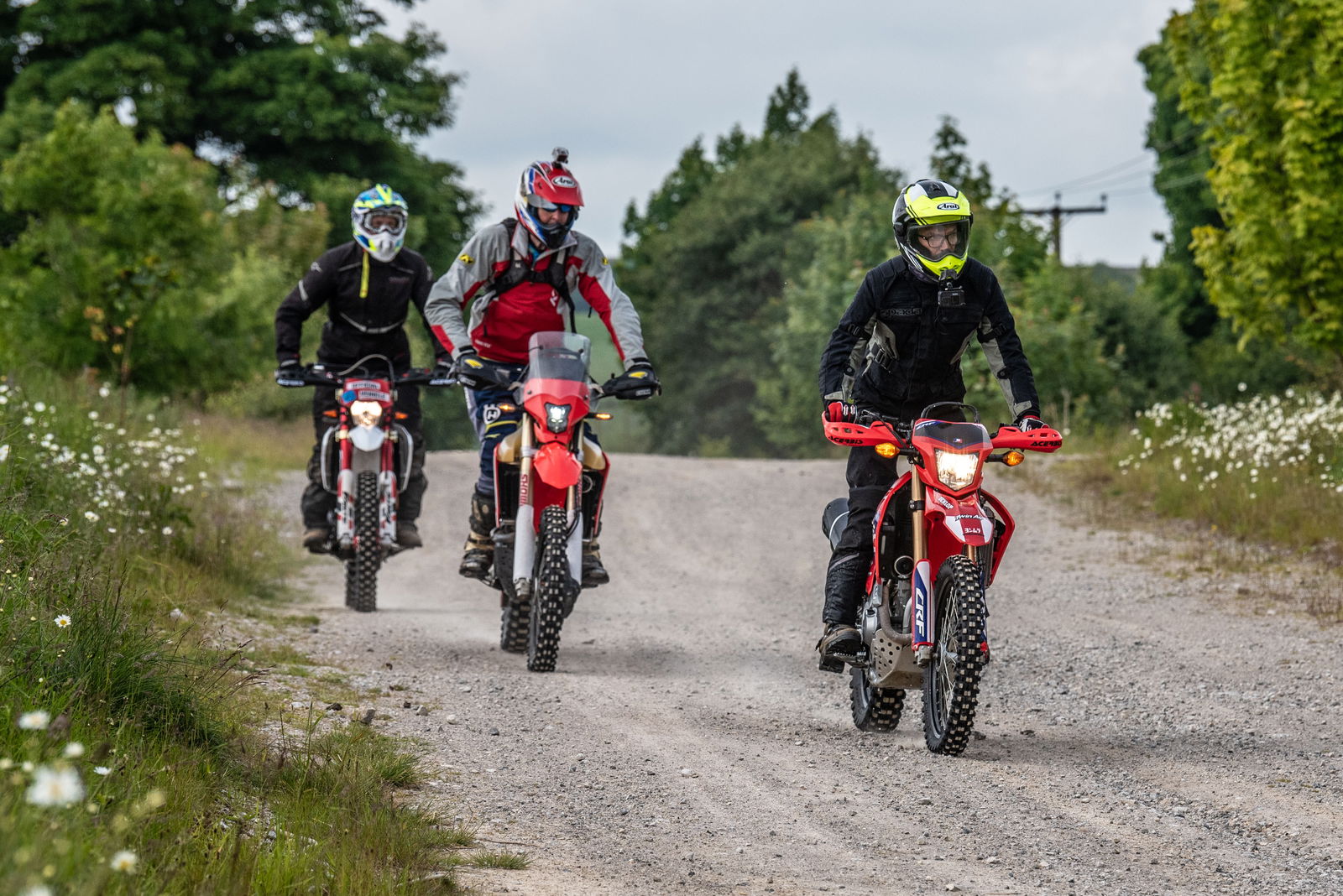New Rider guide | how to ride with a pillion passenger
Motorcycling is a great solo past-time... but why not share the fun? If you’ve never done it before, here's how to ride with a pillion passenger

RIDING a motorcycle with a pillion for the first time can be a daunting prospect... but in truth, it really shouldn’t be. If you've never tried it before, here are some top tips on how to ride with a pillion passenger.
It only takes a few small changes to your riding style and the bike set-up to make it a pleasurable experience for both rider and passenger.
Before we go through the techniques and theory behind taking a pillion, we’ll take a look at when you can and can’t carry a pillion passenger on a motorcycle.
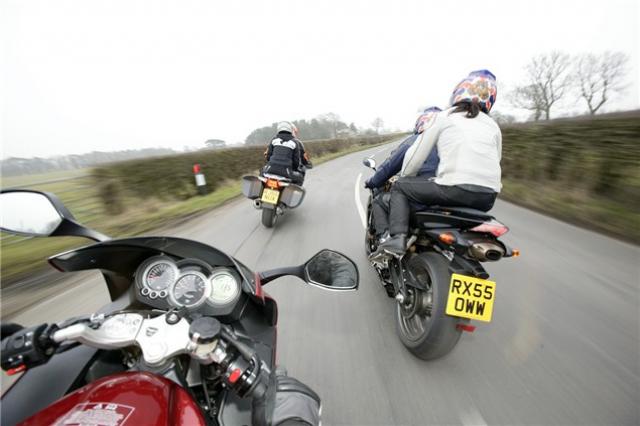
What motorcycle licence do you need to ride with a pillion passenger?
To start with, the licence you hold will denote whether or not you can carry a pillion. If you are riding a bike on L-plates, carrying a pillion passenger. If you are riding a moped up to 50cc and passed your full car test before February 1st 2001 you don’t require L-plates and can carry a pillion passenger – some roads (such as motorways) may be excluded from use though.
Which motorcycles can you carry a pillion passenger on?
To legally carry a pillion passenger, the bike must have a ‘proper seat’, ruling out the ability for a passenger to rest on a rear mudguard or luggage rack. The bike must also be fitted with footrests that the passenger must be able to reach with their feet. To carry a pillion, the passenger must be able to sit astride the motorcycle facing forwards with one foot on each of the footrests. Only one pillion passenger can be carried at any one time.

Here is how not to carry a child as a pillion - no safety gear (other than a helmet) and the footpegs are not even turned down!
Can a child be carried as a pillion passenger?
Yes, they can and at present, there is currently no minimum legal age for them to ride as a pillion. They must wear a suitable helmet, be able to sit astride the motorcycle seat with their feet on the footrests, and be able to hold on properly. Additionally, they should wear suitable protective clothing and it is strongly recommended that they have parental consent.
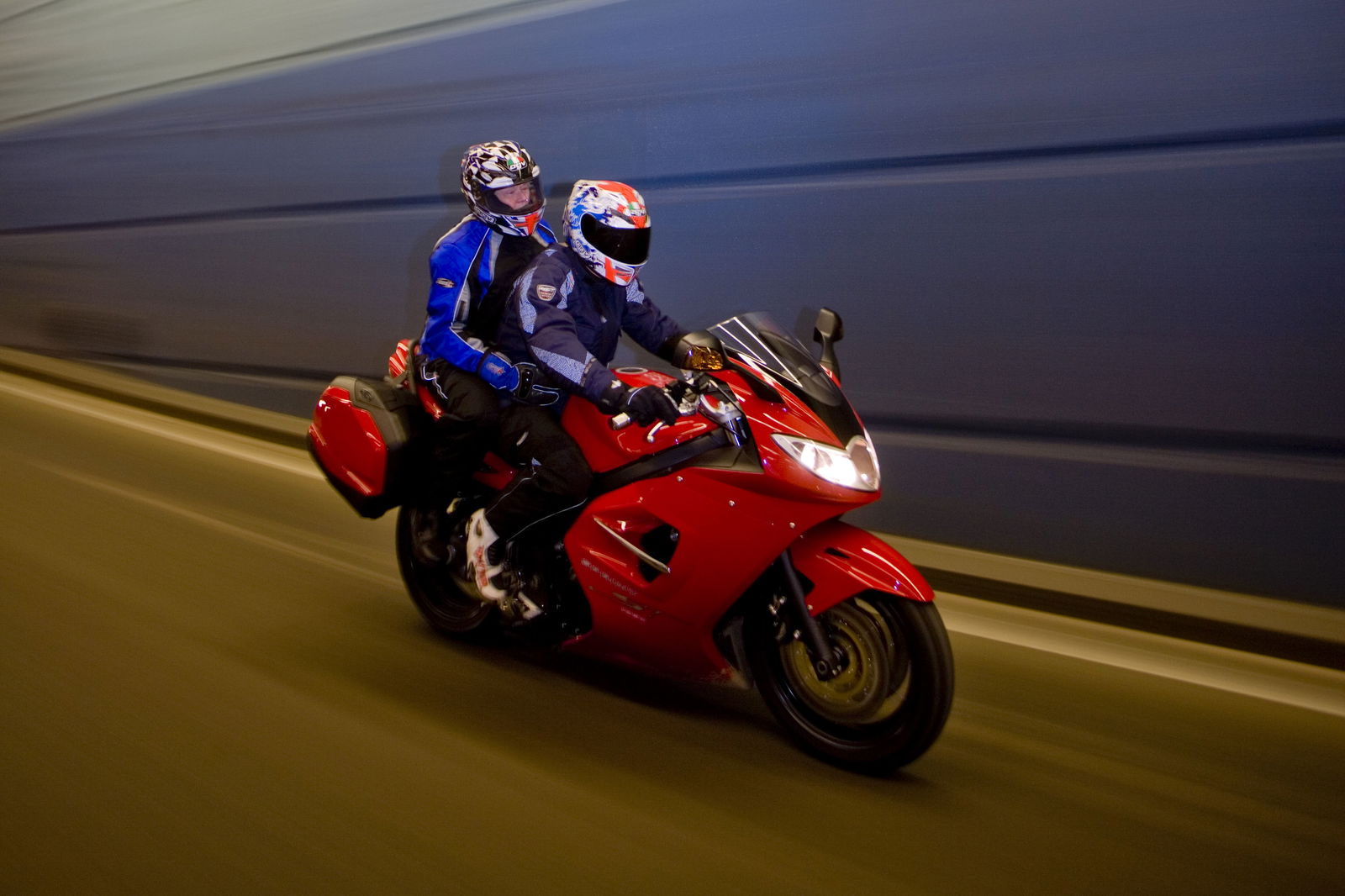
How to ride a motorcycle with a pillion passenger
Before you get on the bike it’s a good idea to have a chat with the passenger, asking them if they have ever been on the back of a bike before is a good start. If they are new to riding two-up, let them know what is going to happen and make sure you cover cornering on a bike and how the bike will lean into turns. They will have seen bikes on the road no doubt, but the feeling of tipping in on a bike for the first time is probably very alien. Remind them to lean with you as you make your way through turns and explain what would happen if they didn’t lean as you do. It’s also a good idea to show them how and where to hold on – either to you or the bike’s grab rails if they are within reach.
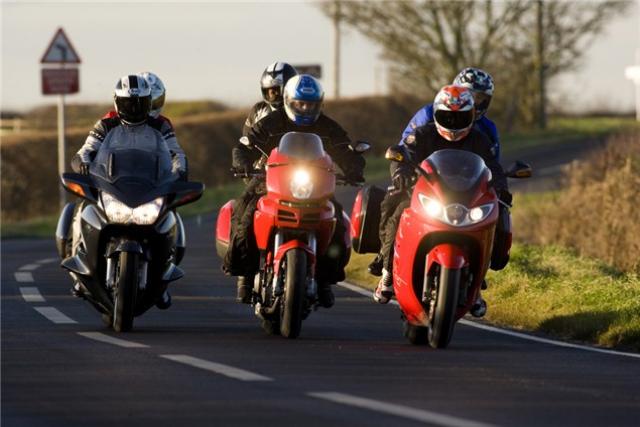
What riding kit does a pillion passenger need?
Like the rider of a bike, currently, UK law only requires a pillion to wear a helmet as a minimum safety requirement. Just a helmet, light jacket, and jeans are not ideal. If it’s possible, lend them some of your spare riding kit, some boots, textiles or leathers, and some gloves as well.
Don’t overload the machine
Most motorcycles will have a maximum weight that the machine can carry. You mustn’t exceed this as you could be liable for a ticket if stopped by the police or invalidate your insurance if you did have an accident. The bike’s maximum laden weight will be listed in the handbook if you don’t have that check with a dealer before riding.

Should you adjust the bike before carrying a pillion?
Most bikes will require a modicum of tweaking before you take a passenger out on the road. The main area of attention will be the rear suspension that now has to hold the majority of the extra weight. Adding some preload to the rear shock to deal with this is a minimum requirement – dialling out some of the rebound and increasing compressions slightly is a bonus.
Before carrying a pillion it’s also a good idea to give your tyres a visual check and top up to the specified pressure.

Be relaxed when you ride with a pillion passenger
One of the easiest things to get wrong when riding with a pillion is to tense up. It’s really easy to do – I did it the first time I took a passenger – but it doesn’t help you them or the bike. Try and keep your shoulders relaxed and your passenger will feel more relaxed as a result.
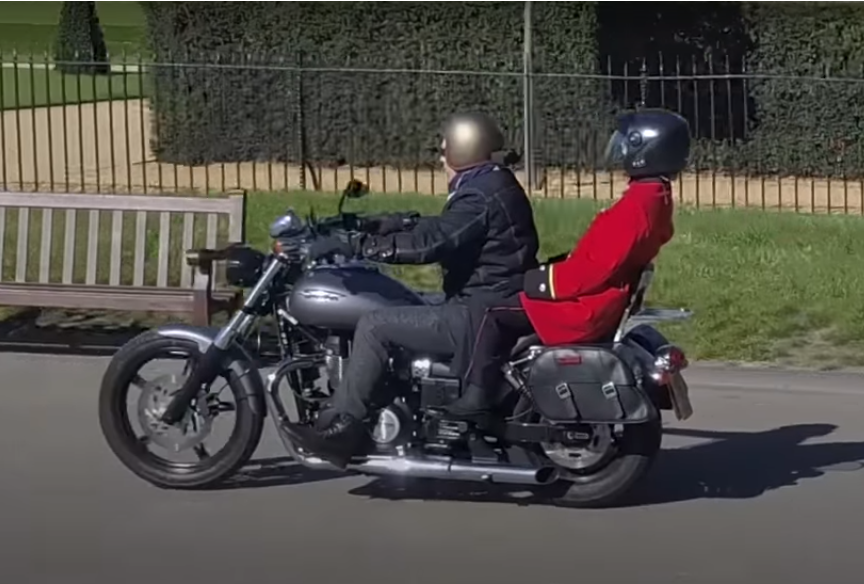
Be smooth
The main issue people have when riding pillion is the clash of helmets when acceleration, braking or changing gear. The problem stems from you (the rider) having a fuel tank, the handlebars and the footpegs to hang on to – your passenger just has the pegs and you. They also won’t be aware of the exact point you are going to brake, change gear, or open the throttle. You won’t be able to stop 100% of the head clashes but you can alleviate most of them.
The key here is to make smooth transitions from each of the bike’s controls, making your inputs to the bike as smooth as possible. Braking and accelerating the bike like you’re back on your bike test is a good starting point, you’ll give your passenger time to adapt their position on the seat and their grip on the bike/you to suit the situation. When changing gear you can either feed the clutch out smoothly as possible, trying and match the revs to make the transition up and down the box as seamless as possible. Or you can clutch-less shift up and down the box if that’s a technique you are familiar with. Try and get most of your braking done in a straight line and when you tip the bike into turns try and make it so you can make the turn at a constant radius, nothing freaks out a nervous passenger like mid-corner changes of direction!

Put yourself in their boots!
Most bikes have a pillion seat located higher up than that of the rider. This means the act of leaning the bike into a corner will feel more pronounced to them than it will to you. You don’t want to neuter the feeling of cornering out of the ride, just tone it down slightly. As with leaning from side to side, the action of the bike pitching fore and aft will also seem more extreme to a pillion on a tall perch. Making your braking and accelerating inputs as smooth as possible is the key.
Take your time
It goes without saying but riding with a pillion should be about enjoying being on the bike with another person, not hammering along a B-road and scraping the hell out of the footpegs! Riding like that will only freak out your fellow seat-buddy and it’ll probably be the last time they volunteer to hop on a bike again.
When riding around town it’s probably a good idea to chill with the overtakes a little and maybe not adopt your usual militant style of filtering. Still do it, by all means, it at least shows them one of the many benefits of a motorcycle, just tone it down a little and try not to force the bike through any tight gaps.
Plan ahead
For starters, you should know your route, where you’re going where you are going to stop off for a breather if this is more than just a ten-minute taster ride! You should also be forward planning more than you would if you were riding solo. Slowing for junctions earlier, getting in lane earlier and making other road users aware of your intentions sooner than you ordinarily would.

